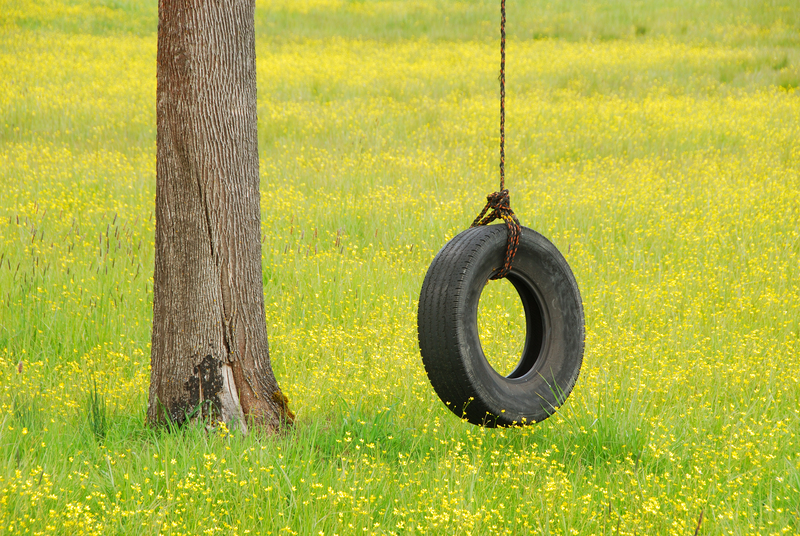Tackle DIY Projects with Ease by Switching to Rubbish Removal Bags from Skips
Are you considering a new DIY project but dreading the thought of waste disposal? There’s a simple switch that can make your home improvements smoother and your clean-up significantly easier. Rubbish removal bags are rapidly replacing traditional skips for DIY enthusiasts and homeowners alike. In this comprehensive guide, we explore why making the switch means tackling DIY projects with unprecedented ease, what makes rubbish removal bags the better choice, and how you can optimise your project workflow.
Why Opt for Rubbish Removal Bags Over Traditional Skips?
While skips have long been synonymous with renovation and construction work, they often come with a set of inconveniences and hidden costs. Many homeowners have discovered the benefits of switching to rubbish removal bags for their DIY waste disposal.
- Convenience and Flexibility: Rubbish removal bags are lightweight, easy to store, and can be utilised whenever you need them. Unlike skips, they don’t require large amounts of space or special permits.
- Cost-Effectiveness: Hiring a skip can be expensive, especially if your waste volumes don’t fill it completely. Rubbish bags let you pay for only the waste you remove.
- No Waiting Times: With skips, you often have to place an order and then wait for delivery and collection. Rubbish removal bags are available from local retailers and can be used immediately.
- Environmental Responsibility: Many waste removal bag services ensure environmentally responsible waste disposal and recycling.
- Mess-Free Projects: Keep your home and project site tidy by filling bags as you work, rather than piling rubbish in the garden or driveway.
Understanding Rubbish Removal Bags
Rubbish removal bags, sometimes known as skip bags, are ultra-strong, flexible containers made from durable woven plastics. Available in various sizes, they're engineered to hold different kinds of household and construction waste, including bulky items and heavy rubble.
The process is straightforward:
- Purchase a rubbish removal bag from your local hardware store or online.
- Fill the bag at your own pace as you work on your DIY project.
- Once full, contact the bag’s collection service; they will pick up and responsibly dispose of or recycle your waste.

Advantages of Rubbish Removal Bags for DIY Enthusiasts
If you’re wondering what really sets rubbish removal bags apart for DIY projects, consider the following advantages:
1. Placement Flexibility
Unlike a large metal skip, which often needs a designated roadside spot, rubbish removal bags can be placed virtually anywhere on your property. Whether you’re in a city flat, suburban home, or rural cottage, their flexibility makes them ideal for working in tight spaces, gardens, indoors, or even upstairs.
2. Ease of Storage
Skips are large and must be delivered and taken away, often taking up driveway or roadside space for days or weeks. With rubbish removal bags, you only pay for collection when you need it. The compact folded bags can be stored in a cupboard or garage until your project gets underway.
3. Simple Waste Segregation
You can use multiple rubbish sacks for different waste types—general rubbish, wood, metals, or green waste—helping you keep your work area orderly and supporting proper recycling efforts.
4. Perfect for All Project Sizes
- Small Projects: Painting, decluttering, or home office makeovers don’t require a large, costly skip. Rubbish removal bags work better for modest waste volumes.
- Medium to Large Renovations: These bags can accommodate substantial volumes and can be used in multiples for phased clean-up.
How to Use Rubbish Removal Bags for DIY Projects
Follow these simple steps to get the most out of your switch to rubbish removal bags:
1. Choose the Right Size
Rubbish bags come in a variety of sizes, typically ranging from one cubic yard (ideal for a bathroom clear-out) up to several cubic yards (suitable for full kitchen renovations). Assess your project and opt for one or more bags that match your likely waste output.
2. Set up Your Bag Before You Begin
Arrange the rubbish removal bag in a stable, accessible location near your project site. This reduces sharp or heavy lifting, helping you manage waste safely as you work.
3. Fill Smartly and Safely
- Distribute Weight Evenly to prevent tilting or splitting.
- Avoid Prohibited Materials: Asbestos, chemicals, and certain electrical items may be restricted—check with your bag provider.
- Sort for Recycling if possible, separating green waste, metals, and other recyclables.
4. Arrange Collection
Once your bag is full, contact your chosen rubbish removal service to schedule pick-up. Most providers offer prompt collection, ensuring your workspace is clear and your project can proceed smoothly.
Comparing Costs: Rubbish Removal Bags vs Skips
One of the main reasons people are switching to rubbish removal bags is cost savings. Let’s break down the comparison:
- Skips: Typically involve high rental costs, delivery fees, and require permits (which may add to the price).
- Rubbish Removal Bags: You pay for the bag and collection as needed, with no surprise charges.
- No Permit Hassle: Placing a skip on a public road entails Council permits, while disposal bags avoid this altogether.
For most residential DIY jobs, rubbish removal bags are the more economical and hassle-free choice.
Eco-Friendly Waste Disposal and Recycling
Modern rubbish removal bag services work hard to divert as much waste as possible from landfill. Many providers guarantee responsible sorting and recycling. This helps individuals play their part in environmental stewardship, making this waste solution even more attractive for eco-conscious DIYers.
Reducing Your Carbon Footprint
- Efficient Collection Routes by bag services mean reduced fuel use and emissions versus skip lorries making single trips.
- Recycling and Reuse: Waste is separated and materials are reclaimed wherever possible.
- Minimising Unwanted Dumping: Skips can attract illegal dumping from passersby. Rubbish bags kept on private land reduce this risk.
When Not to Use Rubbish Removal Bags
Although rubbish removal bags offer incredible flexibility and convenience, there are scenarios where a traditional skip remains best:
- Large-Scale Demolition: Heavy structural demolition may require the capacity and strength of a metal skip.
- Hazardous Materials: If you’re dealing with asbestos, certain chemicals, or medical waste, arrange for specialist removal.
- Extremely Heavy Waste: Large volumes of soil, concrete, or hardcore exceed the weight limit for most bags; check with your provider.
Case Study: Real-Life DIY Success with Rubbish Removal Bags
Let’s examine a real-world homeowner experience:
Jane, a DIY enthusiast from Kent, recently undertook a kitchen remodelling project at her semi-detached home. Initially, she looked into hiring a mini skip, but the costs and logistics (including a council permit and concerns over skip space on her driveway) made her reconsider. After researching alternatives, Jane opted for a 1.5-cubic yard rubbish removal bag.
She stored the bag neatly in her garage until the project began. As old cabinetry and countertops were demolished, waste was sorted between wood, metal and general rubbish, enabling easier recycling later. Once finished, a quick phone call had her waste collected and dealt with in under 24 hours. Jane was left with a spotless drive and glowing feedback for the easy and affordable rubbish removal bag service.
How to Choose the Right Rubbish Removal Bag Provider
Picking a reputable rubbish removal bag provider ensures seamless waste removal and environmental responsibility. Here’s what to look for:
- Transparent Pricing: Look for up-front costs and clear terms, avoiding hidden fees.
- Prompt Collection: Fast, reliable pickup is key to avoiding disruption to your project.
- Eco Credentials: Responsible sorting and recycling can make your project greener.
- Range of Bag Sizes: Ensure your provider offers bags that suit your specific DIY project needs.
Tips to Make Your DIY Project Waste-Free and Efficient
- Plan Waste Management Early: Integrate rubbish removal into your DIY project timeline.
- Choose the Right Bag Size: It's better to slightly overestimate than underestimate your required capacity.
- Sort and Segregate: Use multiple bags to divide recyclables, green waste, and general rubbish.
- Follow Safety Best Practices: Wear gloves, avoid overfilling bags, and never load banned substances.

Frequently Asked Questions About Rubbish Removal Bags
Can I use my rubbish removal bag for plasterboard or electrical waste?
Most providers restrict certain waste streams. Always check with your supplier for specific permitted materials.
How long can I keep the rubbish removal bag before collection?
The beauty of rubbish bags is no rigid timelines. Store and fill your bag at your own pace, arranging collection when you’re ready.
What happens to the waste after collection?
Reputable services transport bags to licensed centres, where materials are sorted for recycling or responsible disposal, keeping landfill waste to a minimum.
Conclusion: Make DIY Waste Worries a Thing of the Past
Switching to rubbish removal bags from traditional skips makes DIY projects in the UK more efficient, affordable, and environmentally friendly. Whether you’re updating one room or renovating your whole house, rubbish removal bags provide the ultimate in flexibility and convenience. Enjoy savings, avoid permits and restrictions, and get more from your hard work—all while doing your bit for the environment.
Next time you plan a DIY project, make rubbish removal bags your smart alternative to skips!
